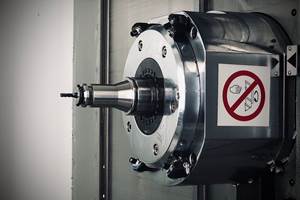Deep Thinking
A job shop that specializes in gundrilling points out the special requirements of machining deep holes.
Share






.png;maxWidth=45)
DMG MORI - Cincinnati
Featured Content
View MoreThere is a special sort of baptism reserved for those who work with gundrilling machines. These deep-hole drilling machines use straight-oil coolant, sending a high-pressure flow of this oil through the tool to flush heat and chips out of the cutting zone. Pre-existing cross holes are normally plugged to prevent this oil from escaping, but occasionally the deep hole being drilled may intersect with a cross hole that it wasn’t expected to touch. When this happens, a geyser shoots through the unplugged hole, the oil pouring out until the operator can quickly pause the cut and turn off the flow.
It is a rare but memorable error—comparable to a crash on a machining center. And the fact that deep-hole drilling is prone to this variety of human error all its own helps to illustrate something important about this machining. Drilling deep holes is a discipline apart from drilling as most shops understand it. Holes that are characterized by the largest ratios of length to diameter require not only unusual machine tools, but also unusual allowances that more shallow holes don’t require. There are reasons, for example, why deep-hole drilling generally must be one of the earlier operations in any production process.
Deep-Hole Disciples
American Machine & Gundrilling of Maple Grove, Minnesota, is a rare job shop—a shop that makes its living off of deep-hole work. Its customers are other machine shops. The 11 CNC or digitally controlled gundrilling machines that the shop employs include small-diameter machines used for medical components weighing ounces, as well as very large gundrilling machines used for mold bases and other massive parts that may weigh several tons.
The deep-hole specialty means that this job shop routinely works with machine and tooling components that would be foreign to most other shops. The drill used on a gundrilling machine has a variety of special features, including one or more coolant passages, as well as a wide-angle V-flute offering plenty of clearance for chips and coolant to flow away. This tool’s cut lands off of center, one curious result of which is a cone-shaped slug the tool produces whenever it exits a hole. “Whip guides”—think of these as steady rests, except that they support a long tool instead of a long workpiece—prevent the slender drill from buckling and whipping as it feeds into the work. And to keep the coolant contained in the moment just before the drill touches the part, there is a bushing that acts as a shroud. Because the bushing mates with the surface of the part, the bushing is angled if the gundrill is used to machine an angled hole. (See photos)
The shop’s dedication to gundrilling also imposes unusual costs. Production coordinator Chuck Berg Jr. points out that because the market for gundrilling tooling is relatively small, the tooling is more expensive. And the shop has to keep a large variety of this tooling on hand to meet the variety of materials and hole dimensions that customers may ask them to produce. Different materials, and different diameters within the same material, call for different geometries—and tool life for these drills can be much shorter than what is typical for standard drills. As a result of all of these factors, the shop has to keep about $300,000 worth of disposable tooling in stock.
Another significant expense is machine maintenance. Pumps, valves and the rest of the coolant delivery system for each machine tool have to be kept in excellent working order, because impurities entering the coolant system can dramatically affect the lubricity and cooling ability of the oil, as well as the finish and dimensional accuracy of the hole. Departing from a rigid maintenance schedule would result in excessive downtime, broken drills and scrapped parts, Mr. Berg says. The shop spends an average of $30,000 per year on machine maintenance.
One other source of expense is extra floor space. This shop’s facility looks like a half-empty shop that could easily accommodate additional machines. But that’s not the case. The work this shop takes on is often so large, the extra space becomes critical simply to maneuver and set up the part.
Understanding Uncertainty
Mr. Berg says that a great deal about any particular gundrilling job is unpredictable. The optimal speed and feed rate, for example, can’t be determined using any table in a handbook. Instead, the way to arrive at the right parameters for any particular part is for an experienced operator to begin with conservative parameters, then gradually increase those parameters to the limit the part will permit.
Also unpredictable is the final position of the hole. In truth, this is the case with any drilling process; even a shallow hole on a machining center has some measurable amount of straightness error. But the length of a gundrill exaggerates this error. A drill with an L:D ratio of 50 to 100 may have an exit point landing somewhere within an area several times the size of the cross-sectional area of the drill.
There are ways to manage the uncertainty. However, the need to respect this uncertainty is probably the aspect of gundrilling least understood by customers that come to this shop for the first time.
In one case, for example, a customer wanted a hole drilled to a diameter precisely corresponding to the OD of a long, rigid sleeve that would be slipped into the hole. In another case, a customer wanted a hole drilled into a long, nearly cylindrical part that would leave only a slight amount of wall thickness all the way around the intended hole. Both of these requests assumed a level of straightness much tighter than what gundrilling is able to achieve.
And yet, Mr. Berg says it was possible to offer both customers workable alternatives. In the case of the hole intended to hold the sleeve, the solution was to drill the hole to a larger diameter than what the customer originally specified. The slight curvature of this oversized hole ensured a snug fit when the sleeve was inserted.
In the case of the nearly cylindrical part, the solution was to machine the hole into raw stock that offered a much larger cross section, after which the customer could mill the final profile of the part around the hole’s actual position.
This latter approach—drilling the deep hole first, machining related features later—is a common strategy for gundrilled parts. The deep hole is likely to be the most uncertain feature. But once this hole is drilled, the uncertainty disappears. American Machine & Gundrill can use ultrasound to measure the hole’s precise location all along the part’s length—meaning that cross holes, for example, can be assured of accurately meeting the deep hole.
Another frequently under-appreciated factor is the difficulty that certain materials present. Gummy materials such as stainless steel can be problematic to gundrill if this gumminess results in a continuous chip that tends to clog the hole. Hard materials, too, are challenging. Mr. Berg says deep-hole drilling is difficult in materials harder than 38 Rc, and it becomes effectively impossible somewhere beyond 48 Rc.
Challenges Big And Small
Mr. Berg says trends in gun drilling can be found in both the smallest and largest parts the shop machines. Small parts, particularly medical parts, are confronting the shop with an expanding variety of exotic alloys. And the large mold bases—a staple of the shop’s business—keep on getting larger.
The trend toward bigger molds is a direct result of improved machining center accuracy, he says. Today, shops can more easily machine large, precision, multi-cavity molds in a single block, trusting the machining center to hold its accuracy all the way across the part’s length. The response to this trend at American Machine & Gundrill has been to develop new setup techniques allowing the shop’s largest machine to accommodate even larger bases.
The quality of drills is getting better, too, he says. Tool life, toughness and consistency have all noticeably improved in recent years. This development, along with the continually growing experience base of the shop’s personnel, is allowing the shop to machine holes in challenging parts that are much deeper than what the shop would once have been able to realize. Mr. Berg says all of these developments—exotic materials, bigger parts and a steady improvement in the shop’s capabilities—are trends he expects will continue.
Related Content
How to Troubleshoot Issues With Tool Life
Diagnosing when a tool is failing is important because it sets an expectation and a benchmark for improvements. Finding out why gives us a clue for how to fix it.
Read MoreBriquetting Manufacturer Tools Up for Faster Turnaround Times
To cut out laborious manual processes like hand-grinding, this briquette manufacturer revamped its machining and cutting tool arsenal for faster production.
Read MoreThe Future of High Feed Milling in Modern Manufacturing
Achieve higher metal removal rates and enhanced predictability with ISCAR’s advanced high-feed milling tools — optimized for today’s competitive global market.
Read MoreOrthopedic Event Discusses Manufacturing Strategies
At the seminar, representatives from multiple companies discussed strategies for making orthopedic devices accurately and efficiently.
Read MoreRead Next
Registration Now Open for the Precision Machining Technology Show (PMTS) 2025
The precision machining industry’s premier event returns to Cleveland, OH, April 1-3.
Read MoreBuilding Out a Foundation for Student Machinists
Autodesk and Haas have teamed up to produce an introductory course for students that covers the basics of CAD, CAM and CNC while providing them with a portfolio part.
Read More5 Rules of Thumb for Buying CNC Machine Tools
Use these tips to carefully plan your machine tool purchases and to avoid regretting your decision later.
Read More




























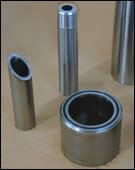
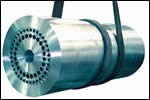
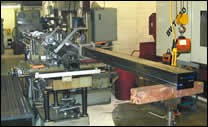


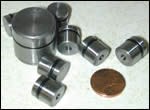
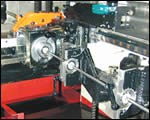





.jpg;maxWidth=300;quality=90)






